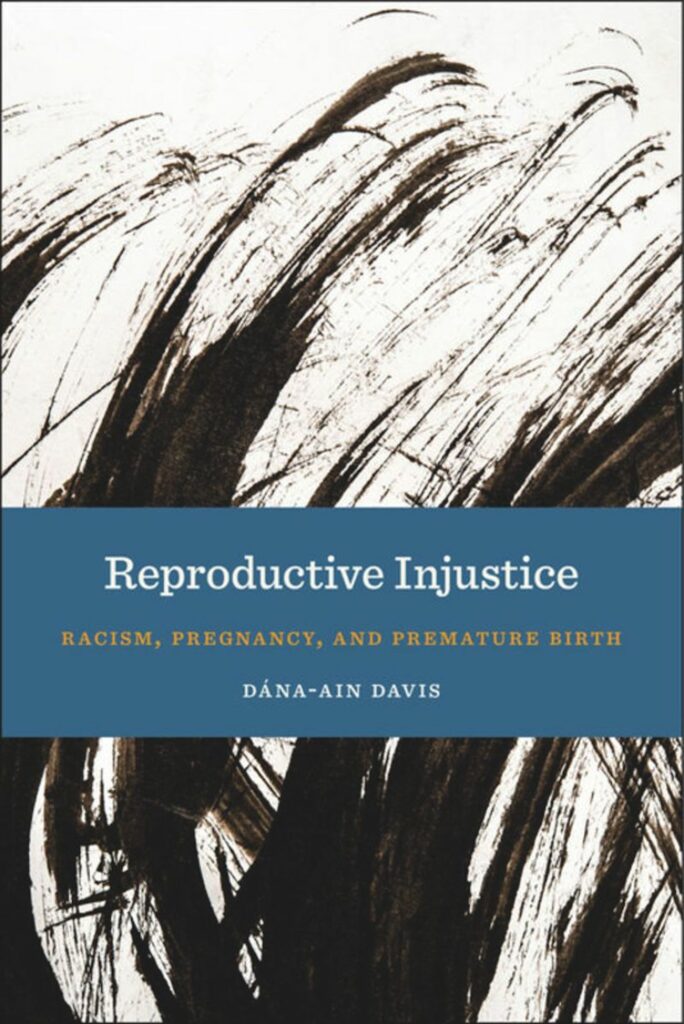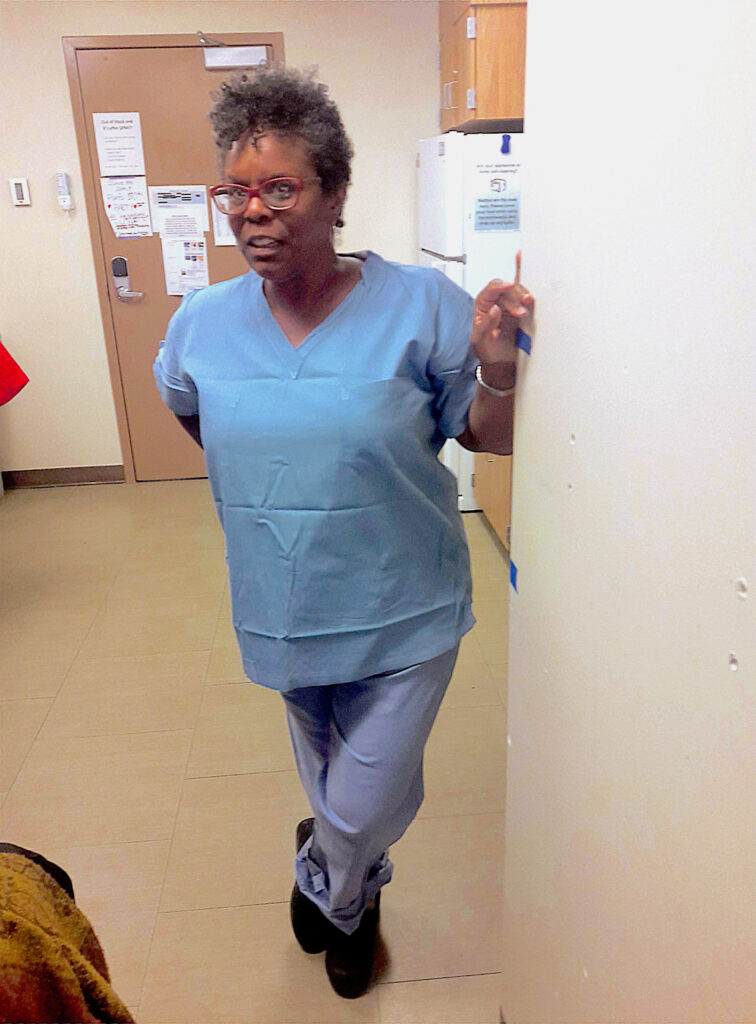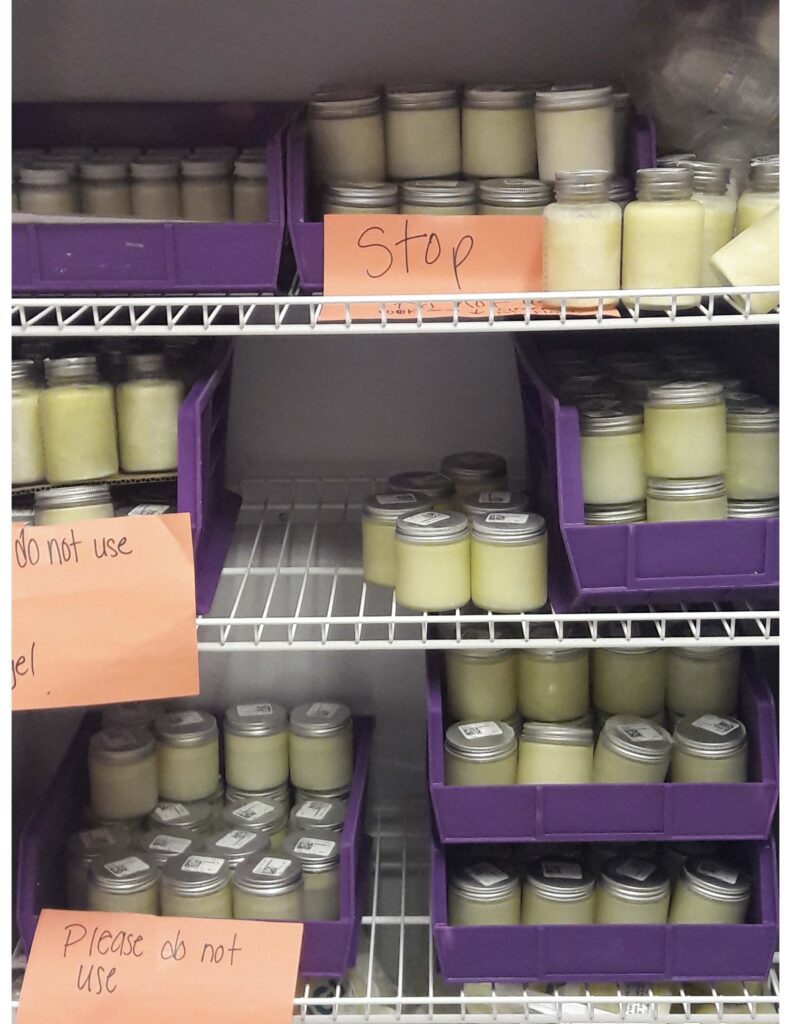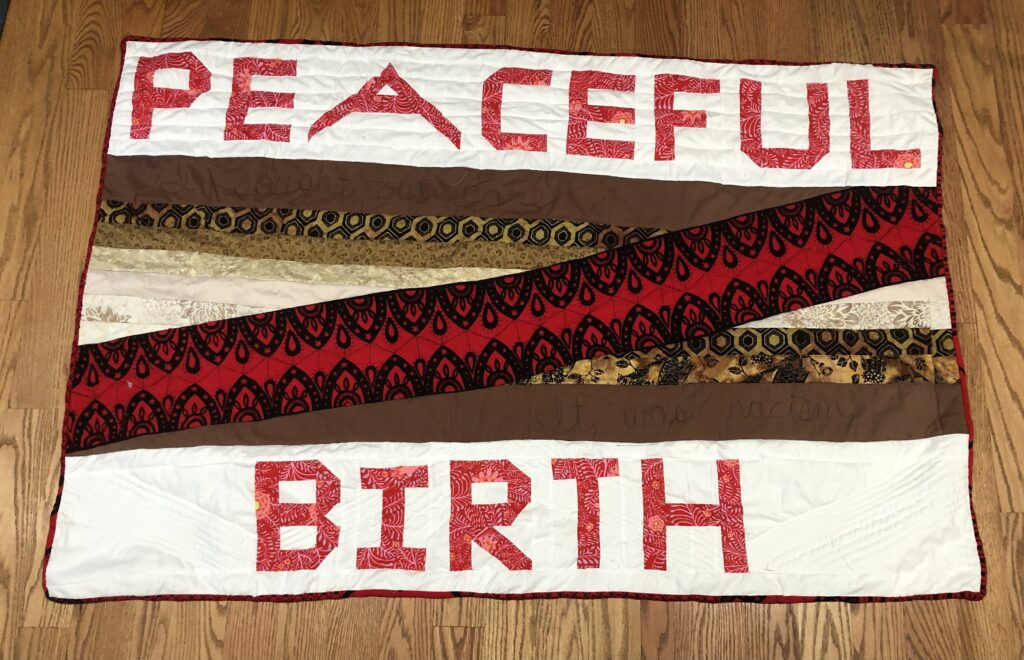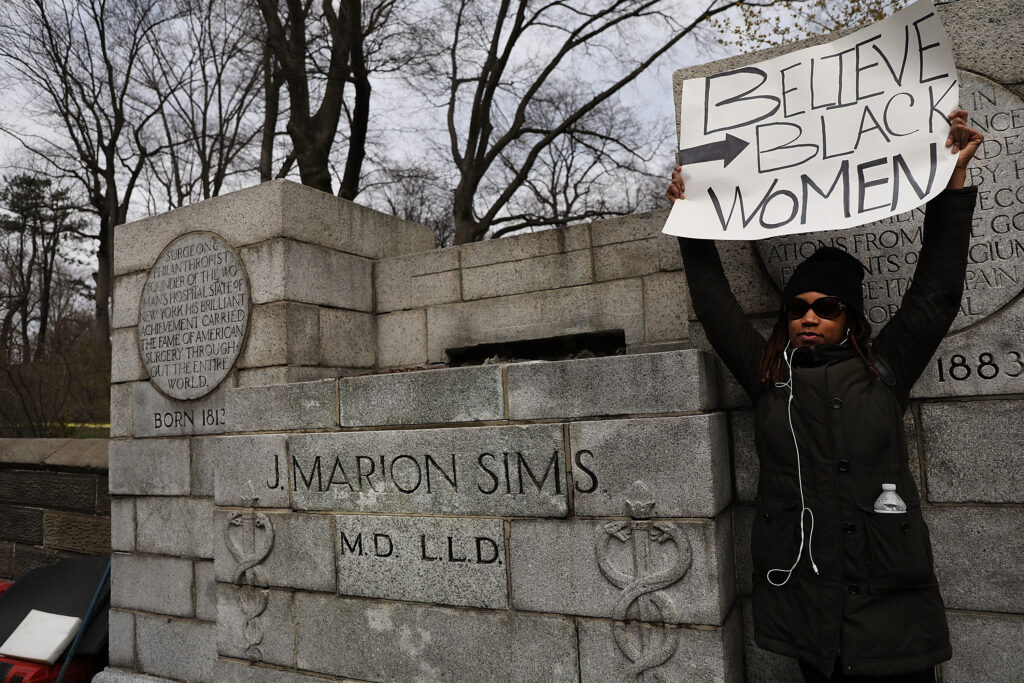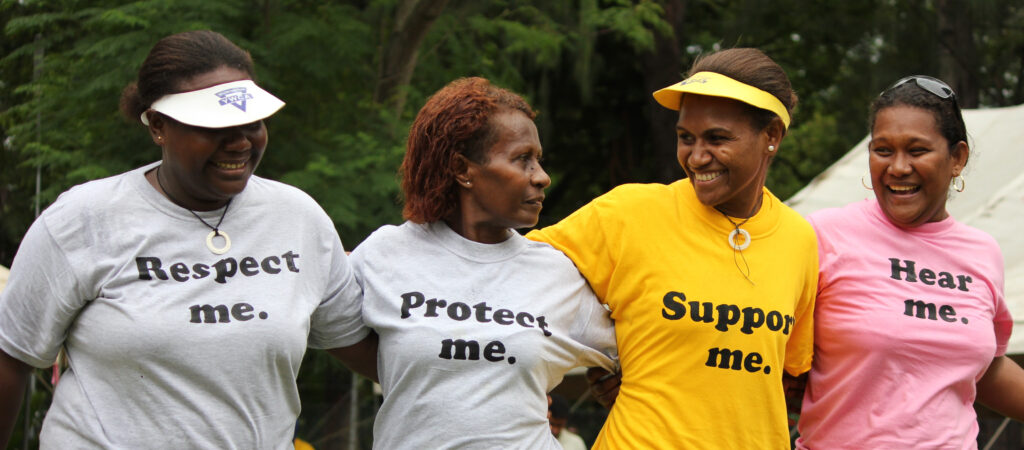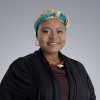Broadening Demands for Reproductive Justice
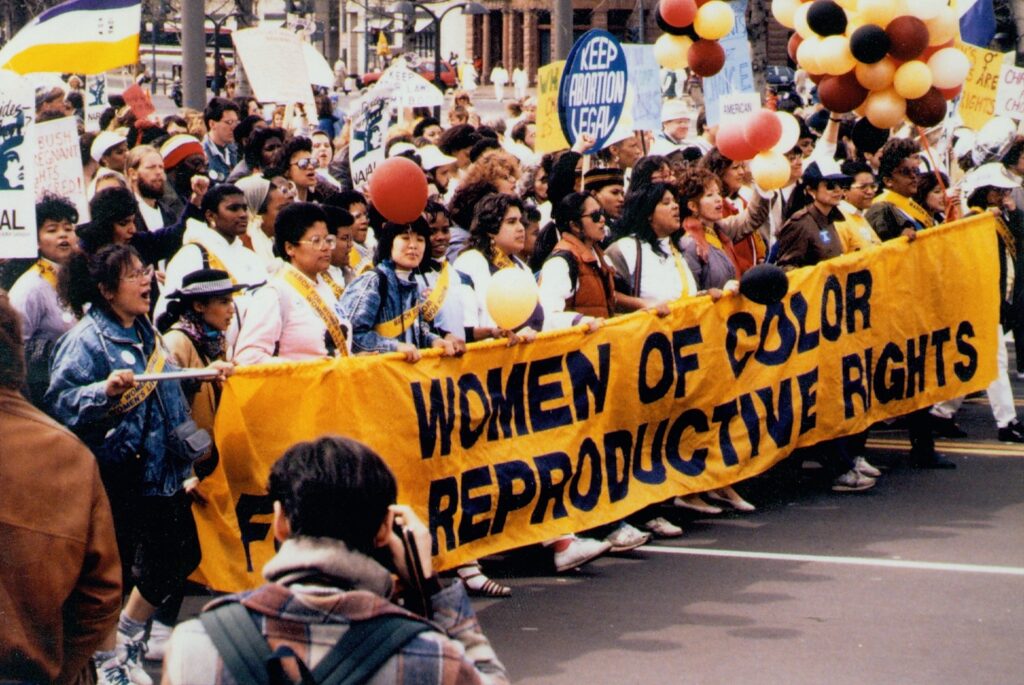
On June 24, the U.S. Supreme Court overturned Roe v. Wade, the 1973 decision that federally guaranteed the constitutional right to an abortion. Demonstrations erupted across the U.S. and beyond—some in celebration, others in outrage.
In the months since, many scholar-activists and community organizers have moved to strategize, locate new partners, and push even harder for reproductive justice. They emphasize how this decision is an attack not only on abortion rights but also on bodily autonomy. Denying the right to abortion also exacerbates existing inequities by placing undue burdens on already marginalized people, given the insufficient medical, economic, and social support infrastructures that exist in the U.S.
Anthropologist Dána-Ain Davis has worked on these issues for decades as a researcher, public scholar, author, social justice activist, and licensed doula. Davis is currently a professor of urban studies and anthropology, and the director of the Center for the Study of Women and Society at the City University of New York (CUNY) Graduate Center. Across all these domains, Davis encourages people to support abortion rights while also thinking more broadly and holistically about how to advance social justice.
While the repeal of Roe has brought the term “reproductive justice” into everyday parlance, the term is not new. In fact, it was coined nearly 30 years ago by a group of Black women who referred to themselves as Women of African Descent for Reproductive Justice. Davis’ work helps continue this long legacy of Black women and other women of color fighting for bodily autonomy.
Anthropologist and SAPIENS Postdoctoral Fellow Marlaina Martin spoke to Davis via Zoom in August. This interview has been edited for length and clarity.
What was your reaction to Roe v. Wade’s overturning?
While I’m not surprised, I continue to be flummoxed over the defamation of abortion rights. In the U.S. today, there’s a tremendous disregard for pluralism. There’s a desire to create a unified body politic: a body of people who think the same, have the same beliefs, and don’t veer from certain kinds of ideology and philosophy about what the role of government is, about what’s right and wrong, and about religion.
This conservative logic is wrapped up in concerns about replacement theory: It is a logic of heterosexist and patriarchal white supremacy. It’s stunning in its execution, how our political machine has unfolded over time to the point of having this religious zealot Supreme Court.
What do you think made this moment possible?
Looking back, this happened through slow, incremental, methodical pathways to control by like-minded people who infused funds and participated in seemingly benign levels of governance such as school board elections and other local bodies. It accrued over time and has come to a head with this Supreme Court. Their current conservative majority is not interested in guaranteeing religious freedom (as the Constitution promises) or keeping government separate from religious matters, but rather in religion orchestrating public life.
What did you do when you first heard about the overturning?
The first thing I did was call Toni Bond, a theologian and good friend who’s one of the founding mothers of reproductive justice. We and Lynn Roberts, a professor of community health, talked out strategies. We discussed everyday practicalities for people who would want an abortion, as well as big picture items for revitalizing the abortion rights and larger justice movements. This includes everything from prison abolition to voting rights to calling out medical systems that refuse to see how racism operates in their hospital environments, among other goals.
We discussed the need to use a similar playbook to the one that conservatives use, but it needs to be about freedom, liberation, and justice in all its forms—of which reproductive justice and access to health care are one. Right now, we’ve got lots of organizations doing lots of different things, but our efforts aren’t necessarily coordinated. We need people funded to earn degrees in communications to become leaders and spokespersons. We need people getting fellowships at progressive think tanks. We should be trained to talk about rights, organize, and write policy papers. We need people to go on school boards.
We must work on all fronts. I know it feels big, but that is what we were talking about.
How do you define “reproductive justice”?
In many instances, people use the term “reproductive justice” to describe access to abortions, but it’s not just about abortion. Justice is about equity and a moral and ethical rightness. Reproductive justice is the right to bodily autonomy. It is the right to have children or not have children. It’s the ability, if one chooses to have children, to be able to raise those children with integrity. It means having all the social and economic support that people need to lead life with integrity whether they have children or not.
Overall, I adhere to this definition that the 12 Black women who named it in 1994 use. I want to name them because it’s important: Toni Bond, Reverend Alma Crawford, Evelyn Field, Terri James, Bisola Marignay, Cassandra McConnell, Cynthia Newbille, Lorretta Ross, Elizabeth Terry, “Able” Mable Thomas, Winnette Willis, and Kim Youngblood.
What first got you interested in studying racism and justice in medicine?
I’ve always been concerned with health and how it relates to Black women. I’ve looked at this issue from various angles through research with HIV-positive Black and Latinx women at the Women and AIDS Resource Network and projects on inequalities within the field of oncology and on violence against women as a public health issue. On a much more personal level, I had an abortion in 1977, so I have long understood that bodily autonomy and making those kinds of decisions were fundamentally important.
And, how are you carrying this work forward to today?
My recent book, Reproductive Injustice, focuses on what I call “obstetric racism” and the rise of neonatal intensive care units in the U.S. I spoke with Black women who gave birth to babies who were preterm or had some anomaly about the perception of the treatment they received. Consistently, people described being dismissed, seen as unintelligent, or treated poorly based on insurance type and status. This kind of treatment dovetails with historical patterns of how Black women were treated in the antebellum period. This led me to analyze reproductive injustice as a consequence of the “afterlife of slavery.” [1] [1] This concept and phrase comes from Saidiya Hartman’s Lose Your Mother.
How do you explain obstetric racism as a concept?
The history of obstetric racism does not begin in the United States but in Europe. Natural scientists, anatomists, and other medical figures experimented—figuratively and literally—with African bodies in developing theories of what supposedly made Blacks (or “Moors”) different from Europeans—and more similar to apes. Within racial science, notions of beauty, temperament, skin and hair color, even different breast shapes became icons of difference—and contributed to the hierarchization of humans.
For instance, Black women’s breasts were generally thought pendulous, and White women’s perky. An example of this hierarchy of difference is the story of Saartjie Baartman, a Khoikhoi woman taken from her home in South Africa and toured around early 19th-century England, Ireland, and France for Europeans’ entertainment and—after death—cast in plaster, dissected, and put on display in a Paris museum.
These legacies of European racial science profoundly influence Black women’s experiences of accessing health care, including reproductive health care, in the U.S. today. They’ve informed how doctors in the U.S. came to see Black women’s bodies as fodder for the development of gynecology, for instance, as analyzed in-depth by historian Deirdre Cooper Owens.
This same accumulation of ideas produced stereotypical figures of Black women that remain prevalent in popular culture, such as “The Mammy,” “The Jezebel,” “Sapphire” (or the “Angry Black Woman”), and “The Welfare Queen.” All four have characteristics that fuel obstetric racism. For example, the concept of “obstetrical hardiness” is ushered in through the stereotype of The Mammy: namely, the completely absurd notion that Black women don’t feel pain.
How do patients see these stereotypes affecting their care?
In A Birth Story, an illustrated comic I created about obstetric racism, I describe watching a nurse as she repeatedly tried to get an a-line into a woman named LeConté. [2] [2] An a-line, or arterial line, refers to a thin tube placed into a patient’s vein to draw blood or monitor blood pressure. I was there as her doula. When you’re going to get blood taken, you’re supposed to drink a lot of water to engorge your veins. However, LeConté has small veins that are just not readily accessible. Typically, when a person is trying to get an a-line in or do a blood draw, they’re only supposed to try three times. After that, you go get someone else. Twice, I witnessed a health care professional exceed that, even though LeConté was telling them, “It’s painful!”
Maybe some of that had to do with the belief that Black people don’t feel pain or that a medical professional was acting in their own interest and didn’t really care about the patient. Nevertheless, if somebody tells you that something hurts and you continue to do it, that’s intentionally causing pain.
Can you connect the dots between medical racism and the current attack on reproductive rights?
From my perspective, white supremacy and capitalism play major roles in this. Some people are saying that overturning Roe v. Wade means more Black and Brown people are going to have babies, so it’s not about getting rid of people. How then could it be about white supremacy? However, I think it connects.
For capitalism and other unjust systems to continue in the U.S. despite their obvious harms to the working class, politicians and other elites need to provide an enemy. Many White people have experienced economic disenfranchisement in communities across the nation due to the collapse of the coal industry, decreases in production, outsourcing, et cetera. But they’ve been tricked by the elite to direct their energy toward targeting and undermining access for certain “other” groups of people, such as immigrants and Black and Brown folks, rather than fighting for economic equity for all. This development of “horizontal hostility”—as described by my friend and scholar Beth Richie and her colleagues—ultimately leaves their everyday, bread-and-butter concerns unaddressed.
Meanwhile, capitalism needs excess workers for a redundant labor force. To create this, you lower wages and reinforce the labor force with “native-born” Black and Brown people. But you want to keep these workers at bay as well, so you create a series of processes and policies that disenfranchise them. Finally, to maintain that dynamic, you reduce access to voting, ensure people are continuing to give birth, and then build structures that confine those groups to certain societal levels so they don’t have access to systemic power.
It might feel like a stretch at first, but once you dig into these histories, you see these things are very much aligned.
So, from such a place, how do we proceed in pursuing justice?
Maybe we shouldn’t just be talking about justice, but where are the nodes of intervention that lead us to justice? If we see equity in schools as a way to get to justice, then let’s talk about equity in schools. If we think of people having health coverage for all their basic needs, including abortions, as a way to get to justice, then let’s talk about that. But there must be a big picture, a path toward a thing. If that thing is going to be justice, if it’s going be liberation, if it’s going be freedom, I want us on the ground helping people to be able to have those conversations—like Khiara Bridges did in her measured response to Sen. Josh Hawley’s leading line of questioning after the overturning of Roe v. Wade.
Ultimately, many people are afraid of the word “justice” because they don’t know, or are too disenchanted by everyday struggles, to fathom what it looks like. Well, it looks like all students having equal access to quality computers, textbooks, and broader accessibility accommodations rather than the drastic disparities that currently exist and have long existed for students in certain districts and from certain demographics. It looks like me being able to go to a clinic and not waiting two hours to see a doctor who wasn’t the doctor I had the appointment with, which probably wouldn’t have happened at a more prestigious, private practice. Justice looks like being able to work, not experiencing food fragility, and being able to live without fear of gunshots. Justice looks like freedom.
What comes next?
The way forward is keeping your eye on the prize, which is justice, by focusing on all the spaces under that umbrella where we need to be intervening, organizing, working, and training people—similar to what they did during the Civil Rights movement.
We have to act as if justice is possible all the time.































